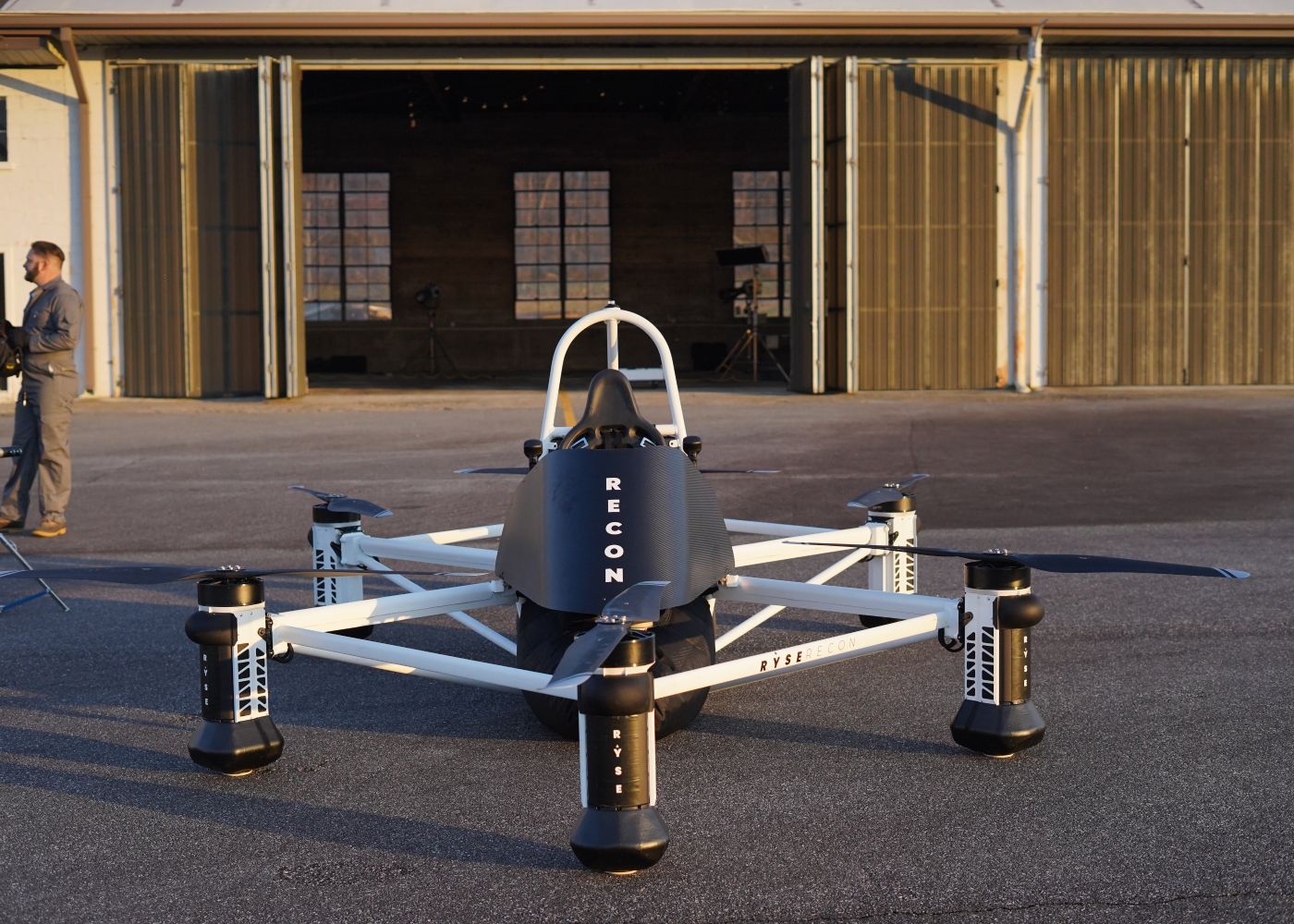Ohio-based startup Ryse Aero Technologies said it has completed multiple piloted flight tests with its single-seat Ryse Recon ultralight personal eVTOL aircraft in Cincinnati, Ohio.

Since its first crewed flight in late June, the company has tested the aircraft’s flight control systems while the Recon completed various maneuvers, including take-off, controlled hover, forward flight, pivot turn, and landing.
“[The] test flights were a monumental step forward in accomplishing our mission, which is to provide an accessible aircraft to people with a purpose and make flight accessible to all,” said Mick Kowitz, CEO of Ryse Aero Tech. “We proved that this vehicle is reliable, stable, and enjoyable, but most importantly, it’s safe.”
Rather than targeting air taxi applications that many eVTOL developers are focused on, Ryse Aero Tech has designed its eVTOL for those working in the agriculture sector or who live in rural communities. Designed to fit under existing U.S. Federal Aviation Administration Part 103 regulations for an ultralight aircraft, the company said its eVTOL doesn’t require a pilot’s license to operate.
“This is an amazing accomplishment for our entire team at Ryse Aero Tech,” said Erik Stephansen, director of regulatory affairs and aeronautics at Ryse Aero Tech, who also piloted the aircraft. “It was effortless and very enjoyable to fly. I was thrilled at how I could literally hover, take my hands off the controls and the Recon sat there stable and safe.”
With six independent propulsion systems and an independent, removable battery, the aircraft is targeting a range of up to 25 miles (40 kilometers), and top speeds of 63 miles per hour (100 kilometers per hour), while flying 400 feet (120 meters) from the ground and carrying a weight of 200 pounds (90 kilograms). The company is aiming for first deliveries of its aircraft in 2023.









the problems of part 103 eVTOL are: 1. within the weight and the associated structural space (yes it matters) limit of part 103 ultralight, it’s extremely difficult to design an eVTOL meeting the necessary safety level that operators with very limited flying experiences will feel comfortable to fly; 2. insurance policy unclear for part 103 eVTOL. as there’s a lack of historical data of the aircraft safety and operation, initial insurance premium may be very high if underwriters are available at all. 3. it’s unclear if FAA will include battery in the empty weight of part 103 electric aircraft including eVTOL. All considered, the commercial prospective of part 103 eVTOL probably wouldn’t be bright.